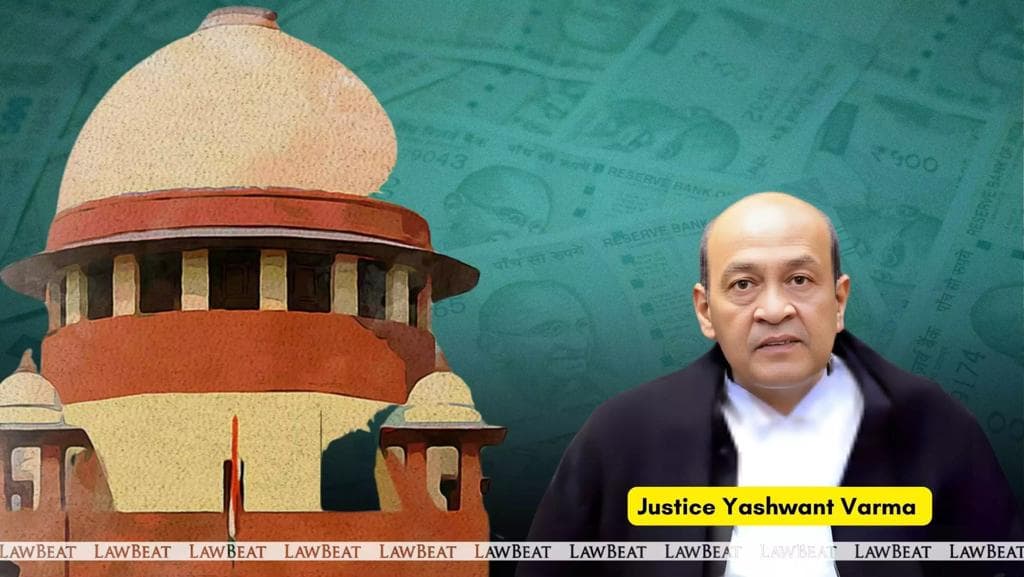
Indian SC Dismisses Justice Varma’s Challenge to Removal Recommendation
Court says CJI's recommendation to President and PM was constitutional, offers Varma liberty to seek further remedies.
The Supreme Court on Thursday dismissed a writ petition filed by Justice Yashwant Varma of the Allahabad High Court, challenging the recommendation by former Chief Justice of India (CJI) Sanjiv Khanna to initiate his removal following the recovery of a large quantity of unaccounted cash from his official residence in Delhi.
A Bench comprising Justices Dipankar Datta and A.G. Masih held that both the constitution of the in-house inquiry committee and the procedures followed during its investigation were not unlawful.
“We have found that the Chief Justice of India and the in-house committee scrupulously adhered to the prescribed process, barring the uploading of photographs and video footage, which we have held was not mandatory. This omission was inconsequential, especially as it was not contested at the time. We have also concluded that the CJI’s decision to forward the report to the Prime Minister and the President was not unconstitutional. We have left certain issues open should the petitioner wish to pursue further legal recourse. Accordingly, we dismiss the writ petition,” the Court stated.
Six Issues Framed by the Court:
-
Maintainability: The Court held that a writ petition challenging the conduct of a sitting judge through an in-house mechanism is not maintainable.
-
Legality of Procedure: It was observed that the in-house process possesses legal validity and does not operate as an extra-constitutional mechanism.
-
Fundamental Rights: No violation of Justice Varma’s fundamental rights was established.
-
Procedural Compliance: The CJI and the committee followed due process. The non-publication of images and videos was deemed non-essential.
-
Executive Communication: The Court held that the transmission of the committee’s findings to the Prime Minister and the President was not unconstitutional.
-
Liberty to Seek Remedies: Justice Varma was granted the liberty to pursue appropriate remedies in the future, should he so choose.
In his petition, Justice Varma sought a declaration that the recommendation for his removal was unconstitutional and beyond the authority of the former CJI. He also contested the validity of the in-house committee’s findings, which formed the basis of the recommendation.
Justice Varma alleged that the in-house inquiry had been initiated in the absence of a formal complaint, and that the Supreme Court’s decision to publicise the allegations via a press release subjected him to an "unprecedented" trial by media.
Background
The matter stemmed from a fire that broke out at Justice Varma’s official residence on the evening of 14 March, during which fire personnel allegedly discovered large sums of unaccounted cash. A video showing bundles of cash burning in the fire subsequently surfaced online.
Justice Varma denied the allegations of corruption and claimed that he was being framed. On 22 March, the then Chief Justice of India constituted a three-member in-house committee to conduct a probe into the incident.
Following the incident, Justice Varma was reverted to his parent High Court in Allahabad, where he was recently re-administered the oath of office. However, he was divested of judicial work on the CJI’s instructions.
The in-house committee, comprising Punjab and Haryana High Court Chief Justice Sheel Nagu, Himachal Pradesh High Court Chief Justice G.S. Sandhawalia, and Karnataka High Court Justice Anu Sivaraman, commenced the inquiry on March 25 and submitted its report on May 3. The report was placed before CJI Khanna the following day.
After the committee indicted Justice Varma, CJI Khanna forwarded the report to the President of India along with a recommendation for Justice Varma’s removal.
Justice Varma challenged the committee’s findings and the recommendation before the Supreme Court, arguing that the invocation of the in-house procedure without a formal complaint was procedurally flawed and invalid.
His plea also contended that the proceedings violated principles of natural justice, as the panel failed to inform him of its adopted procedure and denied him an opportunity to respond to the evidence relied upon.
Regarding the alleged discovery of cash, the plea asserted that the panel report failed to establish ownership or quantify the cash recovered.
Justice Varma further alleged that CJI Khanna had pressured him to resign or opt for voluntary retirement within an “unduly restrictive timeline.”
Arguments
Senior Advocate Kapil Sibal, appearing for Justice Varma, argued that the in-house mechanism was intended only to make internal recommendations and could not serve as the basis for impeachment proceedings against a judge.
He emphasised that the committee’s findings were not binding and that Justice Varma was not challenging the report per se, but its use as a trigger for removal proceedings -- something he contended would contravene Article 124 of the Constitution and the Judges (Inquiry) Act, 1968.
The Bench, however, noted that the in-house process, introduced in 1999, empowered the Chief Justice to act where there was sufficient material indicating misconduct.
“The Chief Justice is not a mere conduit. He has a constitutional duty. If he believes misconduct has occurred, it is within his right to inform the President and the Prime Minister,” Justice Datta observed.
The Court also questioned the delay in approaching it. “If you intended to challenge the constitutional validity of the procedure, you should have done so promptly. The procedural objections you raise now could have been made earlier,” the Bench noted.
In response, Sibal maintained that the issue concerned fundamental rights, and could thus be raised at any point.
“You must demonstrate that the Chief Justice violated due process. If you believe that only Parliament can initiate removal proceedings, then your challenge should have been immediate,” the Court replied.
Senior Advocate Mukul Rohatgi, also representing Justice Varma, cited the precedent of Justice Soumitra Sen’s impeachment, noting that in that case the judge had been given an opportunity to be heard.
For any enquiries please fill out this form, or contact info@thelawreporters.com Follow The Law Reporters on WhatsApp Channels